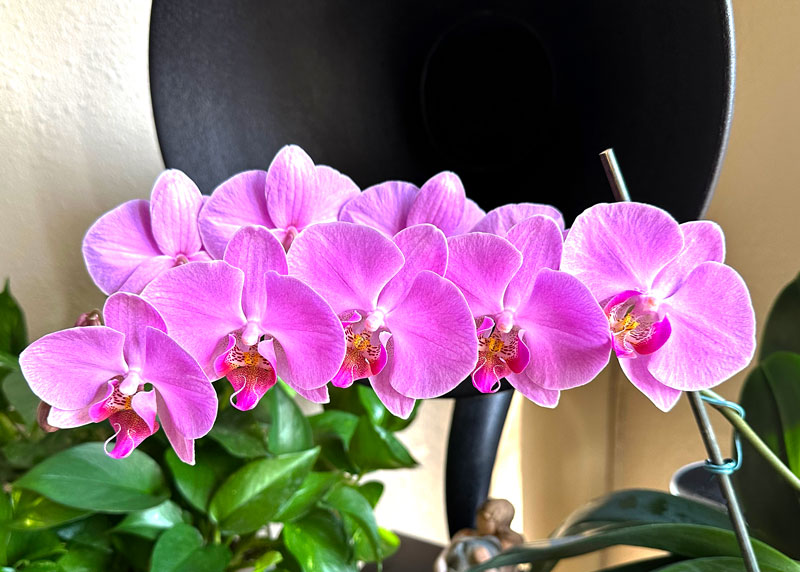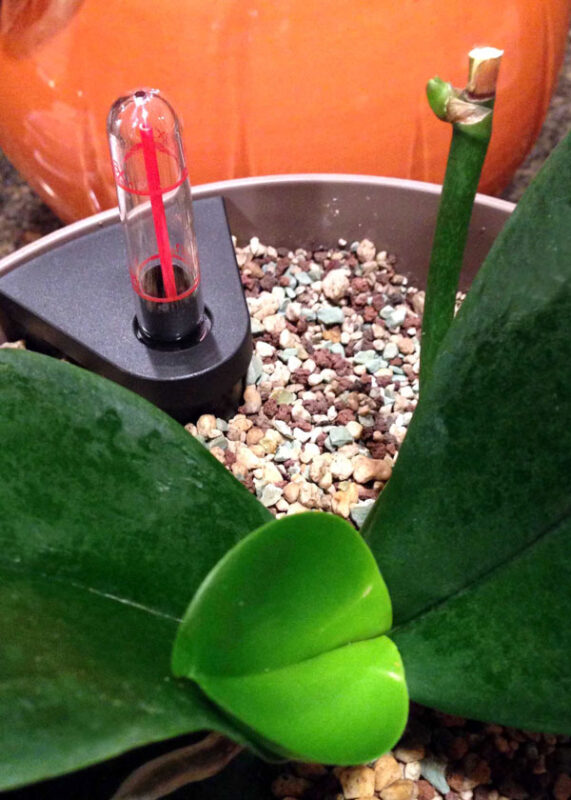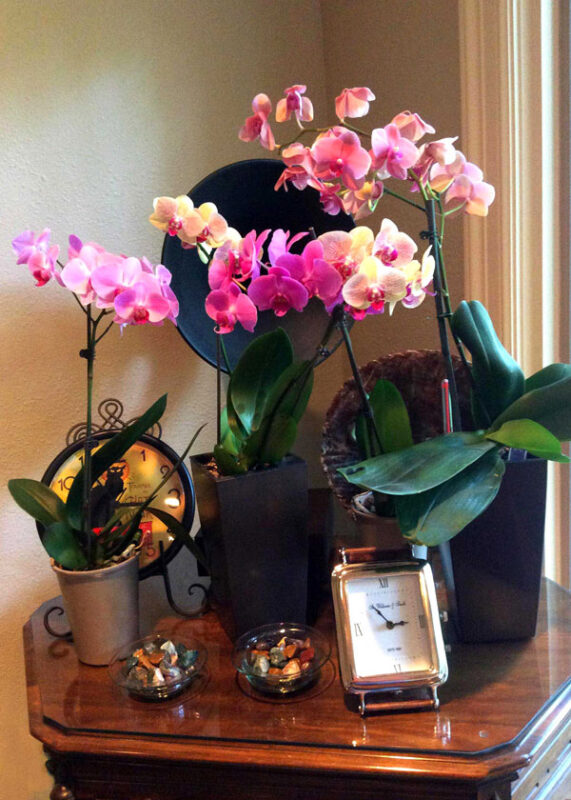Phalaenopsis orchids
If you can learn to pronounce it, I can teach you to grow it.

So, I knew that North Carolina State University’s Extension Horticulture website has a lady who sits there pronouncing the name of each plant name in their files when anyone requests it.
Click here and you’ll see a little speaker icon by the word Phalaenopsis. Click on the speaker and you’ll hear her pronounce it confidently just for you. Do it again and you’ll have it down.
With that out of the way, just a little information on this great orchid from Southern China, Taiwan, Southeast Asia, and New Guinea.
They are known also as “moth” orchids because of the shapes of their flowers. Beyond that, however, they’re also known to be among the very easiest of all orchids to grow and to bring into bloom under indoor conditions. In simple terms, they like “people” conditions. Plus, they’re very forgiving.
With that, let me go directly to the main facts.
What you need to know…
• Scientific name: Phalaenopsis sp.
• Common name: Phalaenopsis orchids or moth orchids
• Choosing your plant: Buy in bloom to get just the right color. Look for plump, fleshy roots and dark green, crisp leaves.
• Lighting conditions: Bright light, but no direct sunlight in summer
• Temperatures: 50F to 90F
• Growth habit: Epiphyte (grows suspended on tree trunks where plants have gotten starts in leaf axils of palms or crotches of branches.)
• Growing medium: Bark or other coarse medium that has accumulated in those growing environments of the tree trunks.
• Water requirements: Let water flow freely through the porous medium a couple of times weekly. Do not allow plants to stand in water or roots will rot. Remember that in nature’s rainforest water will drain away quickly.
• Fertilizer requirements: Feed monthly with diluted solution of orchid specialty food.
• Repot: Replant into clean clay or plastic pots. You can do so soon after purchase and every 2-3 years thereafter. Most Phalaenopsis orchids should be transplanted in early summer, just after they finish blooming. Set the plant into fresh mix. Old mix decays and is no longer suitable. The crown of the plant should be at the top of the soil. Choose a pot that is just large enough to accommodate the plant. Overpotting can lead to soggy soils and loss of your plant.

• Pruning: Once all the flowers have fallen you can trim the old stalk back near its base. That will encourage it to bloom again approximately the same time the following spring. You can also cut it back to within a couple of nodes of the soil line to see if it sends up a secondary flower spike – they often do. That may weaken the plant somewhat, but it will certainly prolong the flowering time.

